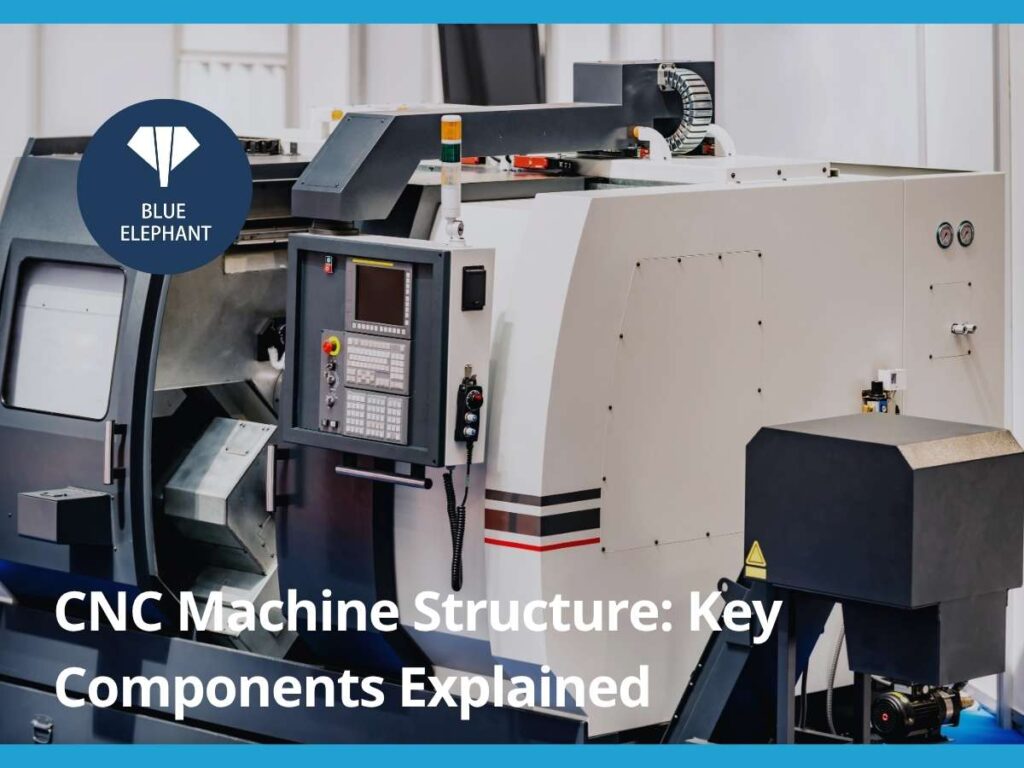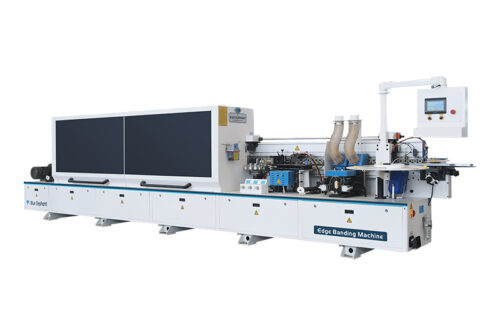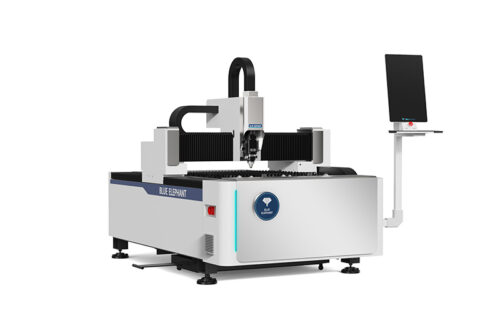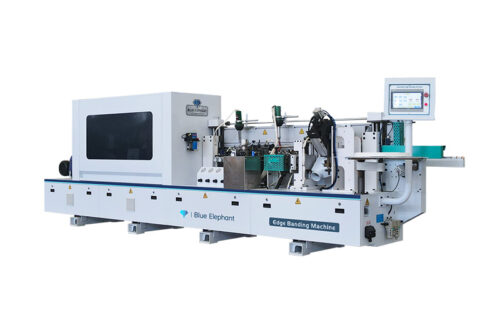I still remember the first time our CNC machine vibrated so much that the entire workshop felt like an earthquake had hit. The culprit? A weak machine frame that couldn’t handle high-speed machining.
That day, I learned the hard way that a CNC machine is only as good as its structure.
Even small structural flaws can mean missed deadlines and wasted materials. That’s why understanding the key components of a CNC machine’s structure is crucial.
As I work closely with manufacturers, I’ve seen how the right machine structure can impact production efficiency, accuracy, and profitability. This article is based on real-world insights, not just theory.
By the time you finish reading, you’ll have a clear understanding of the essential CNC machine components, so you can make informed decisions when choosing or upgrading your equipment.
So, let’s dive in!
Quick Comparison Chart
When evaluating CNC machines for your operations, it’s essential to understand how each structural component plays a distinct role in overall performance. Below is a direct comparison of the core systems that make up a CNC machine, designed to help you quickly identify their importance within the complete machining process.
| CNC Structure | Primary Function | Impact on Performance | Reliability Role |
| CNC Machine Frame & Base | Provides foundational support and rigidity | Determines stability, reduces vibration | Essential for precision and long-term durability |
| Motion Control System | Controls axis movement and tool positioning | Affects speed, smoothness, and cutting accuracy | Vital for consistent, repeatable motion |
| Spindle System | Drives the cutting tool at high speeds | Directly influences cutting force and surface finish | Critical for efficient material removal and tool longevity |
| Tooling and Tool Holders | Houses and secures cutting tools | Affects clamping stability and precision | Key to machining accuracy and process flexibility |
| Workholding Devices & Fixtures | Secures the workpiece during machining | Prevents movement, ensures dimensional accuracy | Supports repeatability and part consistency |
| Drive System | Transfers motor power to mechanical movement | Impacts torque, speed, and motion smoothness | Core to maintaining motion control integrity |
| Control Unit & CNC Controller | Interprets commands and coordinates machine functions | Impacts processing speed and machining efficiency | The central system governing all operations |
| Cooling and Lubrication Systems | Manages heat and reduces friction during machining | Extends tool and machine life, prevents thermal distortion | Crucial for high-speed, continuous production environments |
Each of these components contributes to the overall success of your CNC operation. Evaluating them together helps ensure your next investment meets both technical and business demands.
1. CNC Machine Frame & Base
I’ll never forget the day we installed our first CNC machine. It looked impressive, sleek, powerful, and ready to take on production. But within weeks, we started noticing the problems. Cuts weren’t consistent. The machine vibrated under load. Accuracy? All over the place.
The culprit? A weak frame.
Importance
Let’s get one thing straight—your CNC machine is only as strong as its frame.
The frame and base aren’t just support structures; they define the machine’s stability, accuracy, and durability. If they flex, twist, or vibrate under pressure, forget about precision. Your parts will be inconsistent, your tooling will wear faster, and your operation will be a nightmare to troubleshoot.
This isn’t just a theory. It’s something manufacturers either get right or pay for later—in lost productivity, scrap material, and endless recalibrations.
A strong CNC machine frame has three key factors:
- Frame Material: Cast iron and steel provide superior rigidity and vibration resistance. Aluminum is lightweight but may flex under heavy loads.
- Construction Type: Monolithic (one-piece) frames are stronger than welded frames, which can introduce weak points if not engineered correctly.
- Mass & Weight: A heavier frame reduces vibration, improving stability and precision. Lighter frames may require extra reinforcements.
If a CNC machine feels lightweight, that’s a red flag. A solid frame should feel like it’s built to last—because precision depends on it.
Frame Design
At Blue Elephant, every CNC machine that we produce has a frame design that affects how it moves, cuts, and handles stress. Here are the most common:
- Gantry-Style: Great for large-scale machining, but must be rigid enough to avoid deflection.
- Bridge-Style: Extremely stable, perfect for high-precision applications. Often found in high-end machines.
- Moving Column: The workpiece stays put, and the machine moves. Best for heavy-duty industrial machining.
The Role of the Base
You wouldn’t build a factory on weak ground, right? Your CNC machine’s base works the same way.
A poorly designed base can lead to machine misalignment, uneven wear, and long-term instability. That’s why many manufacturers reinforce their bases with vibration-dampening materials to maintain precision.
Key factors to look for in a CNC machine base:
- High-Mass Construction: A heavier base minimizes movement during operation.
- Leveling Adjustments: Allows fine-tuning to ensure perfect alignment with your workspace.
- Dampening Technology: Reduces resonance and improves cutting accuracy.
Even the best frame and base can fail if they are not installed and maintained correctly.
- Proper Installation: Place your machine on a solid, level surface. Uneven ground can introduce alignment issues that affect precision.
- Regular Maintenance: Inspect for loose bolts, corrosion, or structural wear. A stable frame today doesn’t mean it will stay that way forever.

2. Motion Control System (Axes & Linear Motion)
The motion control system is the backbone of CNC precision. It dictates how smoothly and accurately your machine moves, directly impacting the quality, speed, and efficiency of your machining process. Without a reliable motion control system, even the most advanced CNC machines will fail to deliver consistent results.
Machine Movement
CNC machines operate on multiple axes, each responsible for a specific type of movement. The number and configuration of these axes determine the complexity and flexibility of the machine.
- X, Y, and Z Axes: The foundation of motion control. The X-axis moves the tool left to right, the Y-axis moves it front to back, and the Z-axis controls vertical movement.
- Rotary Axes (A, B, and C): Found in advanced CNC machines, these allow rotational movement, enhancing machining capabilities for intricate geometries.
- Multi-Axis Systems: 5-axis and 6-axis CNC machines provide unmatched flexibility, allowing for complex cuts with fewer setups, improving efficiency and accuracy.
Linear Motion
The linear motion system ensures that the CNC machine moves with precision, speed, and minimal resistance. It consists of several critical components:
Linear Guides
Linear guides provide frictionless movement, reducing wear and increasing machine life. At Blue Elephant, we produce high-performance CNC machines that use roller-bearing guides for superior load capacity and rigidity. Key considerations include:
- Accuracy Class: High-precision guides reduce deflection and ensure repeatable accuracy.
- Rigidity: The higher the rigidity, the better the machine can handle heavy cutting forces.
- Maintenance Needs: Quality linear guides require minimal lubrication and upkeep.
Ball Screws vs. Rack and Pinion
The drive system converts rotational motor motion into precise linear movement. The two most common mechanisms are:
- Ball Screws: Ideal for high-precision machining, ball screws offer excellent accuracy and minimal backlash. They use rolling ball bearings to reduce friction, making them perfect for applications requiring ultra-fine tolerances.
- Rack and Pinion Systems: Used in large-scale CNC machines, these systems provide high-speed movement with extended travel lengths. While they are fast and efficient, they generally require more maintenance than ball screws.
3. Spindle System
A CNC spindle is a rotating component that holds and drives the cutting tool at high speeds. It is responsible for material removal, surface finish quality, and machining accuracy. The spindle’s performance is dictated by its speed, power, torque, and cooling system.
A well-optimized spindle system reduces vibration, increases tool life, and enhances cutting precision, making it a critical factor in CNC machine performance.
Types of CNC Spindles
The type of spindle directly impacts cutting power, material compatibility, and production efficiency. CNC machines typically use one of the following spindle configurations:
- Belt-Driven Spindles
- Uses a belt-and-pulley system to transfer power from the motor.
- Offers cost efficiency and flexibility in speed control.
- May introduce vibration and belt wear, reducing long-term precision.
- Direct-Drive Spindles
- The motor is directly coupled to the spindle, eliminating belt-related losses.
- Provides higher precision, smoother operation, and faster response times.
- Ideal for high-speed, high-precision applications.
- Electric Spindles (Built-in Motorized Spindles)
- The motor is integrated within the spindle housing for maximum efficiency.
- Delivers high speed, low vibration, and excellent energy efficiency.
- Used in advanced CNC systems requiring ultra-high precision and speed.

Factors Define Spindle Performance
A CNC spindle is not just about rotation; it is about how well it handles cutting forces, heat dissipation, and tool engagement. The following factors determine spindle efficiency:
- Spindle Speed and Torque
- Speed (RPM): Determines the cutting tool’s ability to engage with material efficiently. Higher speeds are required for softer materials like aluminum and plastics, while lower speeds are necessary for hard metals.
- Torque: A high-torque spindle provides greater cutting force, essential for deep cuts and hard materials.
- Spindle Bearing
Bearings ensure smooth rotation, minimal runout, and vibration control. The two most common types are:
- Ball Bearings: Standard in most CNC spindles, offering a balance between cost and performance.
- Hydrostatic & Air Bearings: Used in ultra-precision machining, providing frictionless operation and near-zero spindle runout.
- Cooling Systems
Spindle heat buildup reduces machining accuracy and damages tool integrity. Effective cooling systems prevent thermal expansion, ensuring consistent performance. The 2 main cooling methods are:
- Air-Cooled Spindles: Use fans or natural air circulation. Suitable for light-duty machining but may struggle with heat dissipation in prolonged operations.
- Water-Cooled Spindles: More effective at maintaining optimal temperatures, ensuring consistent performance in high-speed, continuous machining applications.
4. Tooling and Tool Holders
Tooling and tool holders are the direct link between your CNC machine and the material being cut. No matter how advanced your machine is, without the right tooling and a secure tool-holding system, precision and efficiency suffer.
A weak tool holder leads to poor surface finishes, excessive tool wear, and machine vibration, while the right setup ensures stability, repeatability, and optimal performance.
Types of CNC Cutting Tools
Each machining operation requires a specific type of cutting tool designed for precision and durability. The most common tools include:
- End Mills: Used for general-purpose milling, contouring, and slotting. Available in different geometries and coatings for various materials.
- Drills: Essential for hole-making applications, available in standard, carbide, and high-speed steel variations.
- Reamers: Used for precision hole finishing with tight tolerances.
- Face Mills: Designed for large surface area cutting, providing a smooth and even finish.
- Thread Mills & Taps: Used for internal threading, with thread mills offering greater flexibility than traditional taps.
Types of Tool Holders
Different tool holders serve different machining needs, offering varying levels of rigidity, precision, and ease of tool change.
- Collet Holders (ER, R8): Flexible and widely used. Ideal for general-purpose machining with moderate accuracy requirements.
- Hydraulic Tool Holders: Provide excellent dampening and vibration reduction. Used in high-precision applications where tool stability is critical.
- Shrink Fit Tool Holders: Use thermal expansion for ultra-tight gripping. Offer superior balance, accuracy, and long tool life, making them ideal for high-speed machining.
- Milling Chucks: Designed for heavy cutting loads with high torque transmission. Provide rigid clamping for demanding applications.
Tool Holding System
A reliable tool holding system must address 3 critical factors:
- Rigidity and Clamping Force: Stronger clamping ensures minimal tool movement, reducing chatter and vibration.
- Balance and Runout Control: A well-balanced tool holder minimizes runout, ensuring consistent cutting precision.
- Ease of Tool Change: Automatic tool changers (ATC) improve efficiency in high-volume production environments, reducing machine downtime.
5. Workholding Devices & Fixtures
Workholding is the silent force behind CNC accuracy and efficiency. No matter how advanced your CNC machine is, if the workpiece isn’t held securely, cycle times increase, and costly mistakes occur. The right workholding devices and fixtures ensure stability and efficiency, allowing your machine to perform at its full potential.
The Role of Workholding
Workholding devices serve one primary purpose: keeping the material locked in place during machining. A secure grip prevents shifting, reduces vibration, and ensures consistent part accuracy. Proper workholding is essential for:
- Reducing Setup Time: Quick and repeatable setups lead to higher productivity.
- Enhancing Cutting Accuracy: A stable workpiece ensures tight tolerances and smooth finishes.
- Minimizing Waste: Secure fixturing prevents misalignment, part movement, and rework costs.
Types of Workholding Devices
Different CNC operations require specific workholding solutions, depending on part size, shape, and machining forces.
- Vises: The Most Versatile Workholding Device
- Ideal for small to medium-sized workpieces.
- Available in single-station, double-station, and self-centering configurations.
- High-precision vises ensure repeatability and firm clamping.
- Chucks: Essential for Rotational Machining
- Used in lathe and milling applications.
- 3-jaw chucks: Automatically center round parts for easy machining.
- 4-jaw chucks: Allow irregularly shaped workpieces.
- Fixtures: Custom Workholding for High Precision
- Designed for repeatability in mass production.
- Can be custom-machined to hold complex or irregular parts.
- Provide high rigidity and minimal part distortion.
- Vacuum Tables: The Solution for Thin & Delicate Materials
- Best for flat workpieces that cannot withstand clamping pressure.
- Suited for aluminum, plastics, and composites.
- Provide full-surface contact for uniform support.
- Magnetic Workholding: Non-Intrusive Clamping
- Used for ferrous materials in milling and grinding applications.
- Eliminates clamping force issues that could distort delicate parts.
- Provides fast, secure, and uniform holding force.
6. Drive System (Motors & Transmission Components)
The drive system is the powerhouse behind CNC machine motion, converting electrical energy into precise mechanical movement. Without a reliable drive system, repeatability suffers, leading to production inefficiencies.
A well-designed drive system ensures smooth, controlled movement, allowing your CNC machine to handle even the most demanding operations with precision.
The Role of the Driving System
The drive system controls the movement of the CNC machine’s axes, determining how fast and accurately the tool engages with the workpiece. A high-performance drive system ensures:
- Precise Positioning: Maintains exact tool location to achieve tight tolerances.
- Smooth Motion Control: Eliminates jerks, vibrations, and irregular motion that can compromise part quality.
- Optimized Speed & Torque: Adjusts to machining needs for high-speed cutting or high-force material removal.
A weak or poorly designed drive system results in backlash, lost steps, and machining errors, leading to costly rework and reduced efficiency.
Types of CNC Motors
Motors are the core of the CNC drive system, responsible for controlling movement along the machine’s axes. The 2 primary motor types used in CNC machining are:
- Servo Motors: The Industry Standard for Precision
- Deliver high torque, fast response, and exceptional accuracy.
- Operate with a closed-loop system, using feedback sensors to correct positioning errors in real time.
- Ideal for high-speed, high-precision applications, where even the slightest deviation matters.
- Stepper Motors: Cost-Effective & Simple Motion Control
- Move in fixed steps, offering good positional accuracy.
- Operate in an open-loop system, meaning they don’t provide real-time feedback for position correction.
- More affordable but less precise than servo motors, making them suitable for low to moderate precision applications.
Transmission Components
Motors generate rotational motion, but without efficient transmission components, that power is wasted. The drive system relies on precision-engineered motion transmission components to ensure smooth and accurate movement.
- Ball Screws: The Gold Standard for Accuracy
- Provide high-precision linear motion with minimal backlash.
- Use recirculating ball bearings to convert rotary motion into precise linear movement.
- Essential for high-tolerance machining applications where positioning accuracy is critical.
- Rack and Pinion Systems: Built for Speed & Long Travel
- Use a toothed rack and gear system for rapid movement.
- Ideal for large-format CNC machines, where ball screws become impractical due to length limitations.
- Offer high-speed motion, but may introduce slight backlash if not properly maintained.
- Belt Drives: Fast, Lightweight, and Cost-Effective
- Use flexible belts to transfer motion between motor and moving components.
- Provide smooth, quiet operation, making them ideal for light-duty CNC machines.
- Less rigid than ball screws or rack and pinion systems, making them unsuitable for heavy cutting forces.
7. Control Unit & CNC Controller
A CNC controller is an integrated system that interprets design files, sends motion commands, and synchronizes machine operations. It serves as the brain of the CNC machine, ensuring that every movement, speed change, and tool action occurs with absolute precision.
A well-optimized controller:
- Converts G-code into precise tool movements.
- Regulates spindle speed, feed rate, and cutting parameters.
- Integrates with motors, sensors, and feedback systems for error-free machining.
- Ensures repeatability and accuracy, eliminating guesswork from production.
Without a fast, efficient, and reliable CNC controller, even high-end machines struggle with precision, repeatability, and productivity.
Components of a CNC Control Unit
A CNC controller is more than just a processing unit—it’s a sophisticated system built to maintain absolute control over machining operations. The most critical components include:
- Motion Control System: The CNC controller directs how the machine moves, using:
- Interpolation Algorithms: Calculate smooth transitions between movements for high-precision machining.
- Feed Rate Control: Adjusts tool speed to match cutting requirements and prevent material damage.
- Axis Coordination: Ensures multiple axes move in perfect synchronization for complex, multi-dimensional machining.
- Input and Output Interfaces: A CNC controller processes real-time inputs and sends high-speed outputs to different machine components. Key functions include:
- Reading G-code & CAD/CAM files to translate designs into physical cuts.
- Communicating with sensors, motors, and drives to maintain position accuracy.
- Receiving feedback from encoders and limit switches to prevent over-travel and misalignment.
- Feedback Systems: Modern CNC controllers use closed-loop feedback systems to ensure that actual machine movement matches the programmed path. These systems use:
- Encoders: Track tool position and correct deviations in real time.
- Load Sensors: Prevent tool overload and optimize feed rates.
- Limit Switches: Protect machine components from exceeding motion limits.
Types of CNC Controllers
Different industries and applications require specific CNC controllers to match performance needs. The most common controller types include:
- PC-Based Controllers:
- Run on standard computing hardware.
- Allow for customization and integration with external software.
- Best for flexible, high-tech machining environments.
- Microcontroller-Based Controllers:
- Compact and efficient, ideal for smaller CNC machines.
- Less computational power but effective for low-to-mid complexity machining.
- Industrial CNC Controllers (Fanuc, Siemens, Heidenhain):
- Built for high-speed, high-precision manufacturing.
- Features advanced automation, diagnostics, and AI-driven optimizations.
- Used in aerospace, automotive, and high-precision industries.
Role of CNC Software & User Interface
The user interface and control software determine how easily operators can manage CNC functions. Modern controllers feature:
- Touchscreen Interfaces & Digital Displays for real-time monitoring.
- Remote Machine Control for managing production from offsite locations.
- AI & Predictive Maintenance Features to optimize performance and prevent downtime.
A user-friendly interface ensures faster setup, reduced operator errors, and higher efficiency in daily operations.

8. Cooling and Lubrication Systems
I’ll never forget the day we pushed a CNC machine past its limits. We were machining hardened steel, and everything seemed fine—until the tool overheated, jammed, and shattered. The spindle seized up, and within seconds, what should have been a high-precision job turned into a costly disaster.
The problem? A weak cooling and lubrication system.
No matter how powerful your CNC machine is, heat and friction are its greatest enemies. Without proper cooling and lubrication, tools wear out faster and machine components break down, leading to downtime, increased costs, and lost production.
The Role of Cooling & Lubrication in CNC Machining
Cooling and lubrication systems extend tool life, maintain accuracy, and prevent costly breakdowns. They serve 3 primary functions:
- Temperature Control: Prevents heat buildup that can warp materials and damage cutting tools.
- Friction Reduction: Ensures smoother tool engagement with the workpiece, improving surface finishes.
- Chip Removal: Washes away debris and prevents material buildup, reducing machining defects.
Types of CNC Cooling Systems
Different cooling methods are used depending on material type, cutting speed, and machining application.
- Flood Coolant
- Delivers a continuous stream of coolant directly onto the cutting zone.
- Best for high-speed machining, deep cuts, and tough materials.
- Prevents heat-related tool failure and improves surface finish.
- Mist Coolant
- Uses a fine mist spray of coolant and compressed air.
- Ideal for light to moderate machining applications where excessive fluid isn’t needed.
- Reduces coolant consumption and environmental impact.
- Through-Spindle Cooling (TSC)
- Delivers coolant directly through the tool or spindle, reaching the cutting edge.
- Eliminates heat at the source, making it perfect for deep-hole drilling and high-precision cuts.
- Prevents chip recutting and ensures flawless machining results.
- Air Cooling
- Uses compressed air to blow away heat and chips.
- Suitable for materials like plastics, composites, and certain non-metals where liquid cooling can cause contamination.
- Reduces thermal expansion and keeps cuts clean.
Lubrication Systems
While cooling focuses on temperature control, lubrication prevents mechanical wear and ensures smooth operation.
- Automatic Lubrication Systems: Deliver controlled amounts of lubricant to bearings, ball screws, and guide rails. Reduce manual maintenance and eliminate dry friction damage.
- Minimum Quantity Lubrication (MQL): Uses tiny amounts of high-performance lubricants instead of flooding the cutting zone. Reduces environmental impact and coolant disposal costs.
- Grease vs. Oil Lubrication
- Oil-based lubrication: Used in high-speed CNC machines for continuous, even distribution.
- Grease-based lubrication: Provides long-term protection for slow-moving components with heavy loads.
Conclusion
That first CNC machine I bought? A costly mistake. But that failure taught us an important lesson—structure is everything.
Now, we never invest in a machine without analyzing its frame, spindle, and motion system. You shouldn’t either.
If you want precision, efficiency, and durability, you need a CNC machine with a rock-solid foundation. This guide has given you the key components to look for—now it’s your turn to make the right decision.
Need expert guidance? Contact us today!
Recommended Reads for You
Want to learn more? Here are some articles filled with valuable tips and information to guide you further:
Still haven’t found what you’re looking for? Don’t hesitate to contact us. We’re available around the clock to assist you.













